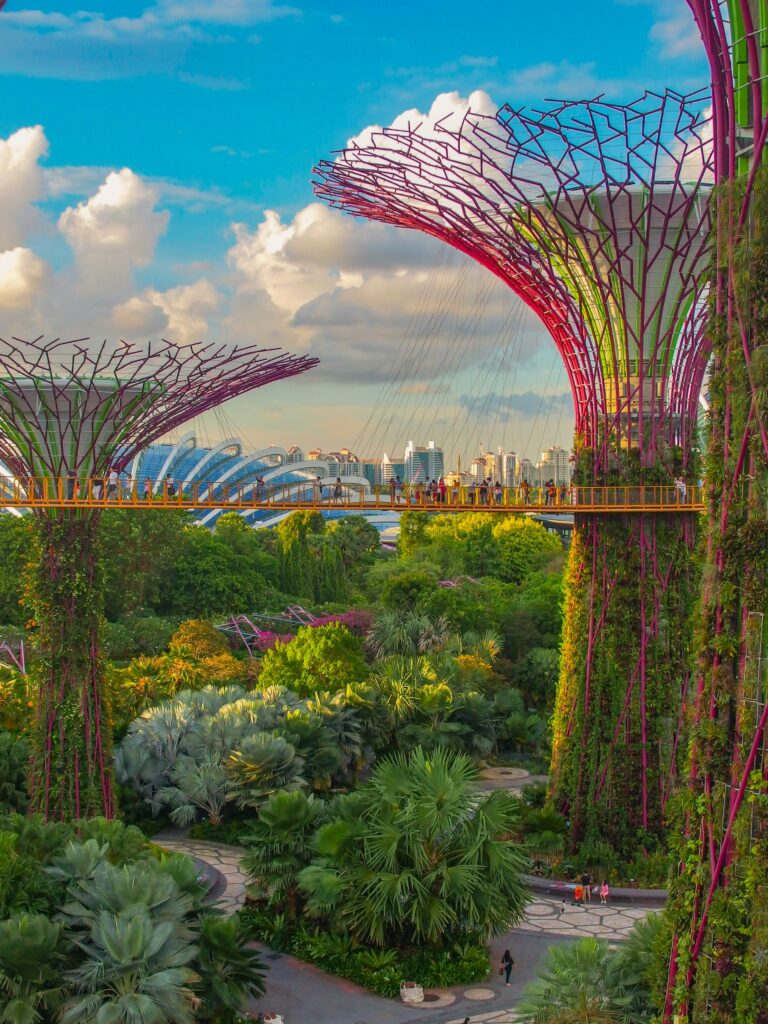By Mercedes Quintanilla.
Biophilia, a concept introduced by biologist Edward O. Wilson in the 1980s, refers to the innate human tendency to connect with nature and living organisms. This inclination, in its purest form, reflects a deep desire to bond with the natural world—a connection that, according to Wilson, has been disrupted by rapid urbanization and the growth of artificial environments.
Biophilic design is a sophisticated extension of this concept. It is a design philosophy that seeks to integrate nature into built environments, elevating the quality of life by restoring the fundamental connection between humans and the natural world. Through elements such as natural light, greenery, organic materials, and patterns that evoke the landscape, biophilic design transforms spaces into sanctuaries that not only offer aesthetic pleasure but also promote health, well-being, and productivity.

The impact of biophilia on human life has been supported by extensive research. Stephen Kellert, one of the most influential theorists in this field, argues that the connection to nature is not just an aesthetic benefit but a biological necessity that profoundly impacts our physical, emotional, and intellectual health. Studies show that natural environments can:
- Accelerate recovery from illnesses and surgical procedures, reducing healing times.
- Improve mental and social health, regardless of geographical or socioeconomic context.
- Optimize workplace productivity, thanks to natural light, proper ventilation, and views of nature, which reduce stress and enhance performance.
- Improve cognitive abilities, such as concentration and memory, particularly in tasks that require high attention.
- Foster healthy child development, establishing a positive connection with the natural environment, essential for healthy growth.
- Activate sensory and neurological patterns in the brain that can only be found in nature, promoting overall well-being.
- Create healthier communities, where individuals value and protect nature in their immediate environment.
Restorative Biophilic Design: A Sustainable Future
Modern urban design has contributed to an increasing disconnection between humans and nature, leading to environmental degradation and unsustainable resource consumption. The introduction of restorative biophilic design seeks to correct this course by integrating practices that encourage lower environmental impact and foster a symbiotic relationship between people and nature—even in urban settings.
Restorative biophilic design advocates for:
- Low environmental impact strategies, which not only enhance energy efficiency but also ensure the use of sustainable materials and the protection of biodiversity.
- Spaces that promote health and well-being through direct connection with nature, optimizing both interior and exterior environments to improve the quality of life for inhabitants.
- Responsible resource use, minimizing the ecological footprint while improving the built environment.

Ultimately, biophilia is not a passing trend but an evolving discipline aimed at improving our relationship with the natural world. Integrating these principles into the spaces where we live, work, and relax not only supports our individual well-being but also addresses a global need to build a more balanced future, where future generations can enjoy a healthier and more harmonious environment.
Biophilic design is not just an aesthetic response; it is an investment in a more conscious, sustainable lifestyle, deeply connected to what is essential.
Reference.
Kellert, S. and Calabrese, E. 2015. The Practice of Biophilic Design. www.biophilic-design.com
Kellert, S. R., Heerwagen, J. H., & Mador, M. L. (s. f.). Biophilic Design. Research Gate. Recuperado 22 de julio de 2021, de https://www.researchgate.net/publication/284608721
Photography: Mercedes Quintanilla/Singapore
Read the Comments +